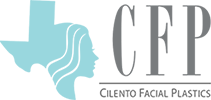
Your nose plays a significant role in defining your facial features and overall appearance. For many people, it is more than just a functional part of the face—it’s a source of confidence and self-expression. If you’ve ever felt that your nose doesn’t harmonize with the rest of your face or if you experience breathing difficulties due to its structure, a primary rhinoplasty might be the solution.
Primary rhinoplasty, or a first-time nose surgery, is a procedure designed to reshape and enhance the nose while maintaining its natural appearance. This surgery is about more than aesthetics; it’s about achieving a nose that complements your unique facial structure and improves your quality of life. Whether you are seeking subtle refinement or addressing a more noticeable concern, a primary rhinoplasty can lay the foundation for a balanced and confident look.
What Is a Primary Rhinoplasty?
Primary rhinoplasty is a surgical procedure performed on a nose that has not been previously altered by surgery that’s also known as Primary Nose Surgery. Unlike revision rhinoplasty, which corrects or refines the results of a previous procedure, a primary rhinoplasty focuses on creating a strong foundation for achieving your desired look from the start. This initial surgery is critical in ensuring that the results appear natural, balanced, and in harmony with your other facial features.
A primary rhinoplasty can address a wide range of concerns, from aesthetic issues to functional problems. For some individuals, this might mean reshaping a nose that they feel is too large, too wide, or asymmetrical. For others, it could involve correcting breathing issues caused by structural abnormalities like a deviated septum. Regardless of the motivation, the ultimate goal of a primary rhinoplasty is to create a nose that not only looks good but also functions properly.
Why Consider Primary Rhinoplasty?
Choosing a primary rhinoplasty is often a deeply personal decision. Many people are born with noses that they feel don’t complement their face or reflect their self-image. Common reasons individuals seek this surgery include dissatisfaction with the size or shape of their nose, such as a prominent bump on the nasal bridge, a wide or bulbous tip, or uneven nostrils. Some people also seek rhinoplasty to address injuries that have altered the appearance or function of their nose.
Primary rhinoplasty is not just about changing your appearance—it’s about feeling comfortable in your own skin. A well-proportioned nose can enhance your confidence and help you feel more at ease in social and professional settings. For many patients, addressing a long-standing concern about their nose brings a sense of relief and self-assurance.
The Importance of a Skilled Surgeon
The success of a primary rhinoplasty largely depends on the expertise of the surgeon performing the procedure. This is not a one-size-fits-all surgery; every nose is unique, and the approach must be customized to suit the individual’s facial anatomy and aesthetic goals. A skilled surgeon will take the time to understand your concerns, assess your nose and facial structure, and create a personalized surgical plan.
One of the key challenges of a primary rhinoplasty is achieving results that look natural. This requires a combination of technical skill and artistic judgment. The surgeon must ensure that any changes to the nose enhance overall facial harmony without appearing artificial or overdone. For example, reducing the size of the nose must be done in a way that maintains its structural integrity and doesn’t compromise functionality.
Working with an experienced surgeon also minimizes the risk of complications or the need for revision surgery. During the consultation, the surgeon will discuss realistic expectations and ensure you fully understand the process and potential outcomes. This transparency and expertise are essential for a successful and satisfying result.
What Can A Primary Rhinoplasty Address?
Primary rhinoplasty is a versatile procedure that can address a variety of concerns. Some common aesthetic issues include a hump on the nasal bridge, a wide or bulbous nasal tip, asymmetrical nostrils, or a nose that appears too large or too small for the face. The procedure can also correct functional issues, such as breathing difficulties caused by a deviated septum or other structural problems.
One of the advantages of a primary rhinoplasty is its ability to combine aesthetic and functional improvements in a single procedure. For example, a patient seeking to refine the shape of their nose may also benefit from improved nasal airflow as a result of the surgery. This dual approach ensures that the nose not only looks better but also works better.
Recovery and Results
Recovery from a primary rhinoplasty is a gradual process that requires patience and adherence to post-operative care instructions. In the days immediately following surgery, it’s normal to experience swelling, bruising, and some discomfort. Most patients can return to work or school within one to two weeks, but the healing process continues long after that.
Swelling can take several months to fully subside, and it may take up to a year for the final results to become apparent. This extended timeline allows the nose to settle into its new shape and integrate seamlessly with the rest of the face. While the wait can be challenging, the end result is well worth it—a nose that looks natural, enhances your facial features, and boosts your confidence.
During recovery, it’s important to follow your surgeon’s recommendations, such as avoiding strenuous activities, protecting the nose from injury, and attending follow-up appointments. These steps ensure proper healing and optimize the outcome of the surgery.
The Confidence Boost of a Primary Rhinoplasty
For many patients, a primary rhinoplasty is a transformative experience that goes beyond physical changes. The procedure can significantly enhance self-esteem, helping individuals feel more comfortable and confident in their appearance. A nose that is well-proportioned and harmonious with the rest of the face allows other features, such as the eyes and lips, to shine, creating a more balanced and attractive overall look.
Confidence gained from primary rhinoplasty can have a positive ripple effect on various aspects of life. Many patients report feeling more self-assured in social situations, job interviews, and everyday interactions. The boost in self-esteem often translates into a greater sense of well-being and happiness.
Why Choose Cilento Facial Plastics?
If you’re considering a primary nose surgery, choosing the right surgeon is crucial. At Cilento Facial Plastics, Dr. Cilento brings years of experience and a deep understanding of facial anatomy to every procedure. His approach combines precision, artistry, and personalized care to deliver results that are natural and tailored to each patient’s unique needs.
From the initial consultation to the final follow-up appointment, Dr. Cilento and his team are committed to providing a supportive and positive experience. They understand that rhinoplasty is a significant decision, and they work closely with patients to ensure their goals are met with care and expertise.
Take the First Step Toward a More Confident You
Primary rhinoplasty is more than a cosmetic procedure—it’s an investment in your confidence and well-being. Whether you’re looking to enhance the appearance of your nose, improve its function, or both, this procedure can help you achieve a balanced and natural look that reflects your true self.
At Cilento Facial Plastics, we’re here to guide you through every step of the process, from consultation to recovery. Schedule a consultation today to learn how a primary rhinoplasty can be the foundation for your natural beauty and confidence.


